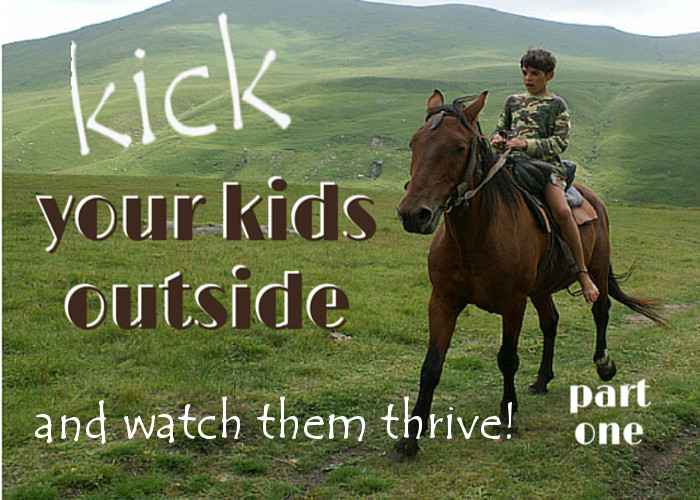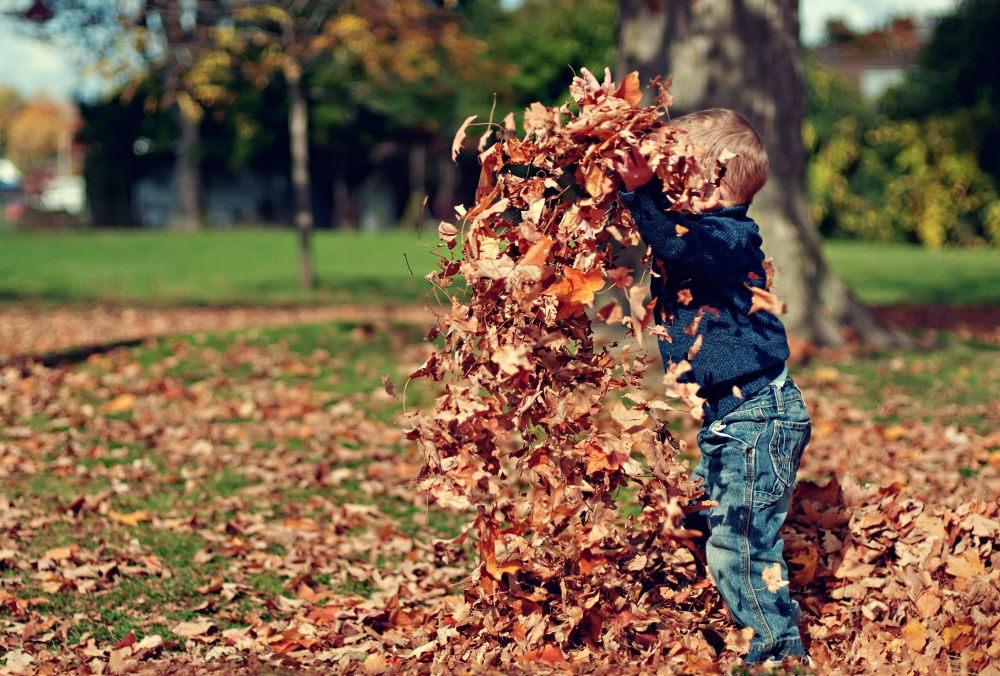By Jan Hatchett
Often, adults consider adopting a simpler lifestyle to counteract the myriad of stressors that become an everyday part of modern living. Some may opt for the most rural of off-grid properties and rough it, while others may be more concerned with self-reliance in an urban area.
There are probably two methods of simplification for every family considering a move in that direction. However, all of those ideas have a few things in common which can benefit children as much as, if not more than, adults. This commonality is knowing and appreciating the health benefits of kid’s outdoor playtime.
Health Benefits of Kid’s Outdoor Play
Children, in particular, thrive with more regular time out of doors. Organized sports are often held on outdoor fields or courts, and while there are many benefits to them, it is not the same as unstructured or child-structured time to really observe and explore different types of outdoor spaces. To spend all summer on a manicured piece of lawn or in a swimming pool isn’t a bad thing, but it doesn’t allow the opportunity to enjoy and observe different areas and different aspects of being surrounded by nature.
One of the good parts of living simply is that it generally comes with less emphasis on electronic gadgets and gizmos. I spent many years reading books in the limbs of an old holly tree with only the birds that would come and flutter in and out. I learned a lot about that old tree and those birds. I felt content and peaceful there. How often, as an adult, do you feel truly content and peaceful? That idea has fallen away in our quest for the modern life, where children usually find it on their own if left with adequate outdoor resources.
Deductive Reasoning
Have you ever watched a young child stop, crouch down, and look at a dandelion? We all have and it usually happens when we’re running late for an appointment.
But, when a child has time to explore and observe, they see things in a manner that is greatly detailed. They check both sides of the flower. They get close. They move back. They may even talk to it. They may grab it in a sweaty little fist and bring it to their mama, in an effort to share the wonder of seeing these amazing little weeds with an open and non-judgmental perspective. Those aren’t weeds, they are treasures! And the careful observation of these treasures builds the basis for effective deductive reasoning. Not too shabby.
Confidence
Kids who hang around outside often find that curiosity trumps fear in life. If a child isn’t exposed to nature and learning about the various items in his/her environment, then simply being in an unfamiliar landscape can become a frightening prospect.
Years ago, I taught Biology in a classroom in an agrarian area outside of a major city. I watched kids struggle with fear of spiders, insects, snakes (we never even saw signs of one) because we would go outside to observe living plants or perform experiments. Some of these students had no idea that all snakes weren’t venomous or that all spiders weren’t deadly. It’s hard enough to be a teenager and go through puberty, but to be so afraid of one’s surroundings in nature is a travesty! It didn’t take terribly long to help them get past their fears and actually observe what was around them, but I surely didn’t realize that I would have to help them to get comfortable off of the pavement.
Play, Playmates, & Creativity
All children benefit from unstructured play time. According to the National Wildlife Foundation, today’s kids spend only thirty minutes per day (on average) of unstructured play time and a whopping seven hours of screen time daily.
This unstructured time often leads to various modes of play, playmates, and creativity. Fresh air and sunshine help too with appetite, and any exercise will also help to combat obesity, a major concern in our modern world.
Riding bicycles, horses, fun farm chores, roller skating, running, walking, swinging, spinning, turning cartwheels, and other activities are an exercise without seeming like constant drudgery. Children can learn to dress appropriately for all types of temperatures and climates. And while we protect our skin from future skin cancers, doctors agree that we don’t get enough Vitamin D for health. Perhaps a happy medium in sun protection would allow for safety as well as adequate vitamin levels.
Eyesight
Eyesight is often diminished by a lack of time in nature for both kids and adults. When we are inside, we tend to focus our eyes on things that are often roughly the same distance from our eyes, which eliminates the opportunity to use our eye muscles to adjust and work to help us view things at different distances.
Handheld electronics can add to this problem because kids are mesmerized by them and can stare at them for hours on end. Outside, we look at clouds, trees, the horizon, an insect, a flower, and all sorts of things at various distances away from us. Just going out of doors becomes a great workout for our eyes.
Avoid Depression
And even a little barefoot time in the garden can be good for us, too! According to Medical News Today, even the bacteria that are naturally found in our soil can help us to avoid depression and increase our quality of life. Maybe those mud pies were a good idea after all.
The health benefits of kid’s outdoor play are undeniable. Join me next week to discover ways for you to increase your time outdoors with your children.
Read Part Two: 20+ Unstructured Outdoor Activities for Kids
Jan Hatchett is a Christian wife and homeschooling mom of two amazing sons. She enjoys log cabin living, writing, quilting, crafting, sewing, reading, and horseback riding. For more of Jan’s exploits, check out www.anotherhatchettjob.wordpress.com.







1 thought on “The Undeniable Health Benefits of Kid’s Outdoor Play”